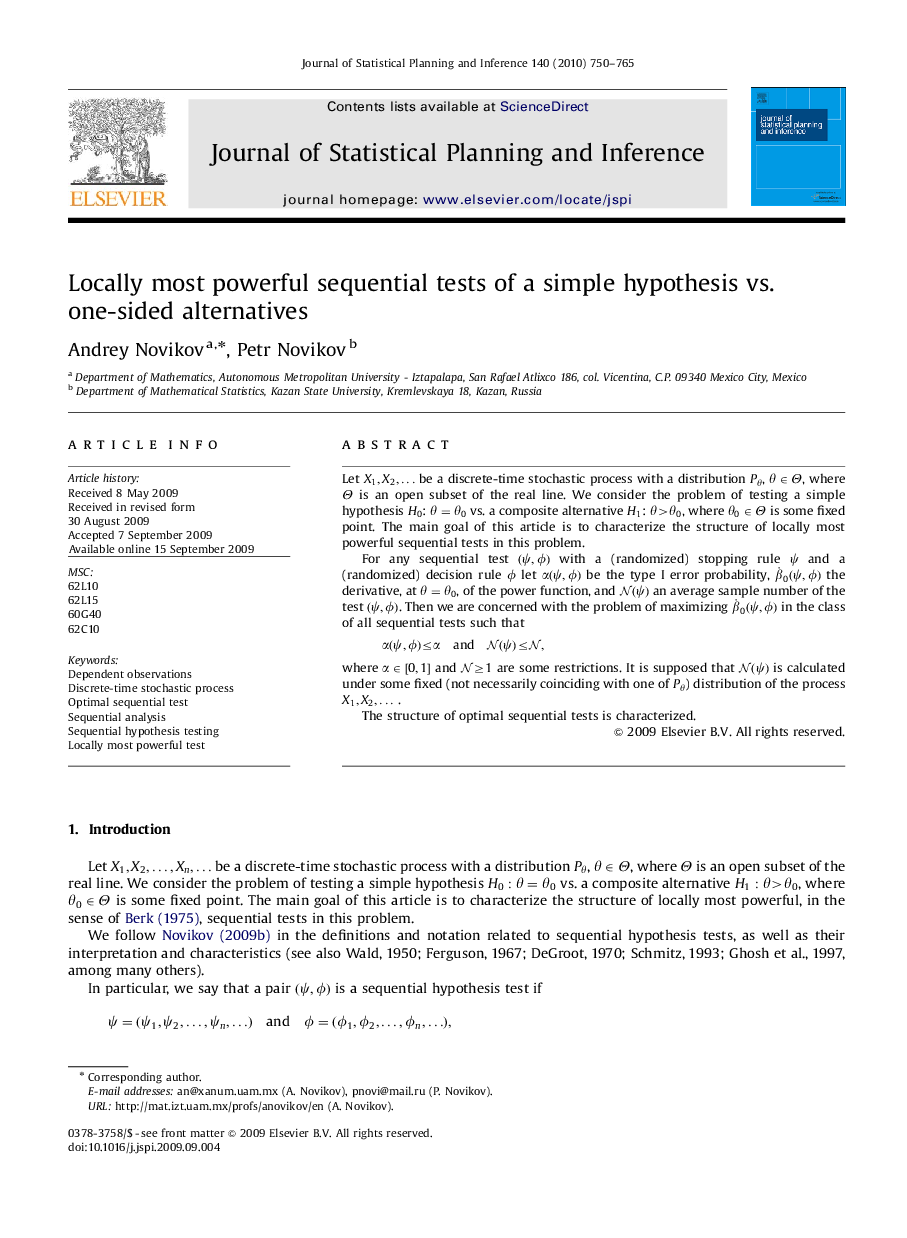| Article ID | Journal | Published Year | Pages | File Type |
|---|---|---|---|---|
| 1147862 | Journal of Statistical Planning and Inference | 2010 | 16 Pages |
Let X1,X2,…X1,X2,… be a discrete-time stochastic process with a distribution PθPθ, θ∈Θθ∈Θ, where ΘΘ is an open subset of the real line. We consider the problem of testing a simple hypothesis H0H0: θ=θ0θ=θ0 vs. a composite alternative H1H1: θ>θ0θ>θ0, where θ0∈Θθ0∈Θ is some fixed point. The main goal of this article is to characterize the structure of locally most powerful sequential tests in this problem.For any sequential test (ψ,φ)(ψ,φ) with a (randomized) stopping rule ψψ and a (randomized) decision rule φφ let α(ψ,φ)α(ψ,φ) be the type I error probability, β˙0(ψ,φ) the derivative, at θ=θ0θ=θ0, of the power function, and N(ψ)N(ψ) an average sample number of the test (ψ,φ)(ψ,φ). Then we are concerned with the problem of maximizing β˙0(ψ,φ) in the class of all sequential tests such thatα(ψ,φ)≤αandN(ψ)≤N,where α∈[0,1]α∈[0,1] and N≥1N≥1 are some restrictions. It is supposed that N(ψ)N(ψ) is calculated under some fixed (not necessarily coinciding with one of PθPθ) distribution of the process X1,X2,…X1,X2,… .The structure of optimal sequential tests is characterized.
